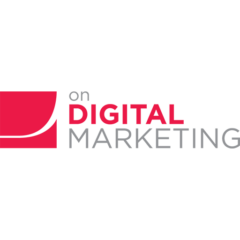The role of traditional marketing used to be quite simple. It sought to inform a potential customer about what a business had to offer (product or service), usually through mass advertising. If there was a good fit between the market and the offering, the customer had the ability to buy, and the price point was in line with the value presented – a sale ensued.
Traditionally, the ability to drive sales was in large part a function of repetition and money. A somewhat linear relationship followed where advertising costs in equaled sales out. Those with the biggest budgets tended to own markets based of their ability to blanket the three channels of print, radio, and television and establish brand dominance. They interrupted a consumer’s attention to push a product or service, regardless of where that consumer might be in the buying funnel.
Yet, with enough repetition and a big enough reach (plus dumb luck), a company would likely find a potential customer that had that specific need and would consider buying as they would be perceived as the market leader based on showing up the most in traditional media.
Today with ZMOT, the consumer is coming to the conversation much more educated on the offering, value proposition, price point and the brand. We all tune out irrelevant advertising and instead use the web to find out what we want, when we want it. Yet, there still exists a huge discrepancy of where marketers spend money and where consumers spend their time.
Doubt this? Ask yourself when was the last time you purchased a product or service based on an ad you were exposed to? Did this stimulus stick with you long enough to eventually elicit a sale?
Even with digital tools, however, a “conversion” still needs to take place. This can be something as simple as getting a user to “Like” a brand on Facebook or something much more tangible like purchasing a product from an ecommerce store.
Either way, the marketer has the opportunity to help drive the business forward by either participating in that conversation on the website or social media and providing value through educational content.
Profitability and Marketing’s Role
Where the process breaks down is when these efforts are not tied back to the business objectives. Often times, businesses can struggle to clearly identify profitability and form a strategy around increasing this. Core metrics like customer acquisition (how much does it cost us to get a customer?), customer lifetime value (how much do we make over the lifetime of that customer?) tend to get ignored or quite frankly, the company can be too lazy to really dig in and find good answers to these questions. The bigger the company and its offerings, the more challenging it can be to identify such objectives.
Note: These are not always easy metrics to get at and can be tough to identify solid numbers. But it is critical that these are tracked and tested against to the best of the company’s ability. Failure to do so makes it easy to make poor strategic decisions. The old axiom of “garbage in equals garbage out” holds painfully true.
Let’s define some of metrics these up front:
Profitability: A set of financial metrics that are applied to a business’s capability to make money, after all expenses and other costs have been subtracted over a specific period of time. Not to be confused with sales. Sales figures and growth can be misleading. While it shows that marketing may be working or there is a good product/market fit, it does little for the business’s future to focus on this metric outside of profitability. Case in point: many companies go bankrupt in the midst of growth cycles by not closely tracking profitability.
In short: Profitability is how much you make from a sale after you subtract everything it costs to make that product – it’s that simple. Don’t forget hidden costs like accounting, rent, acquisition, etc. that need to be amortized over time.

